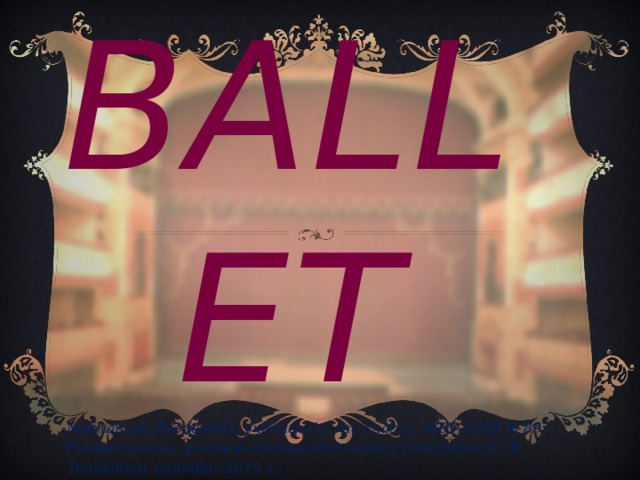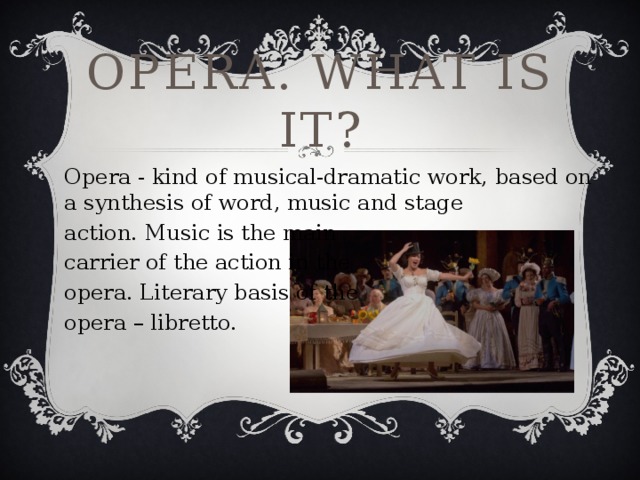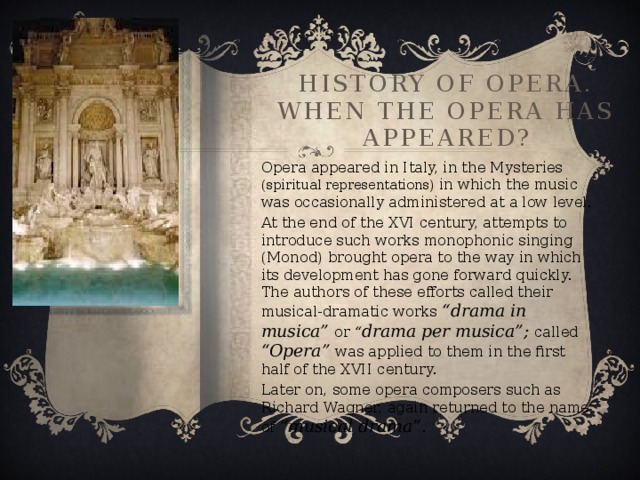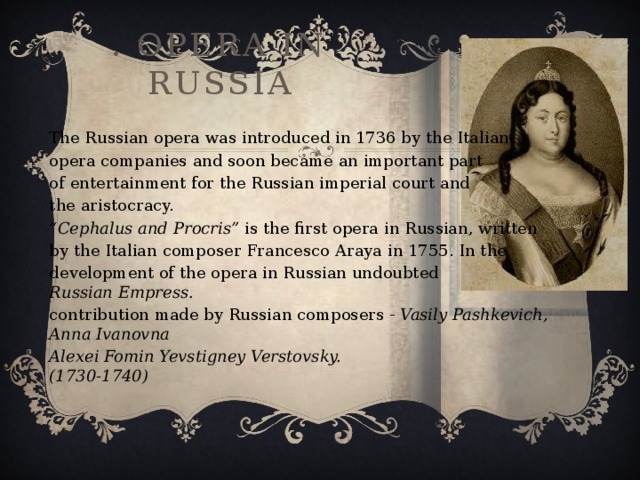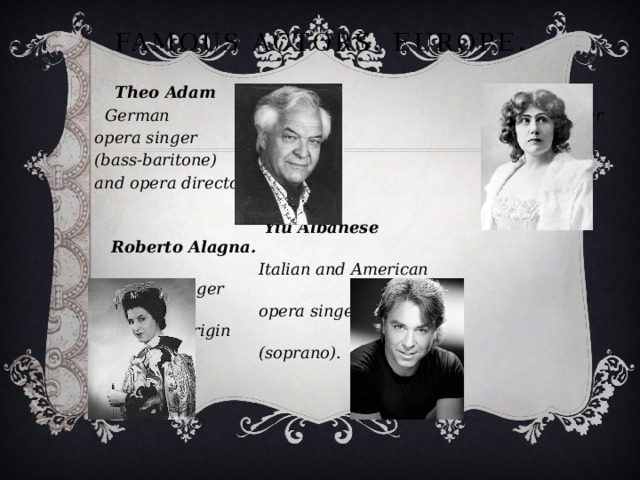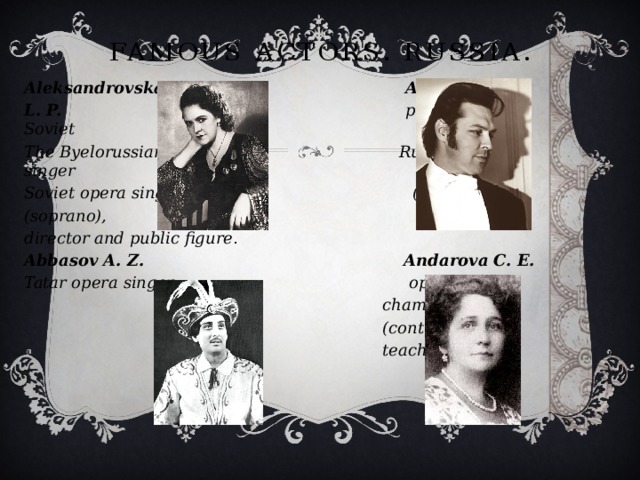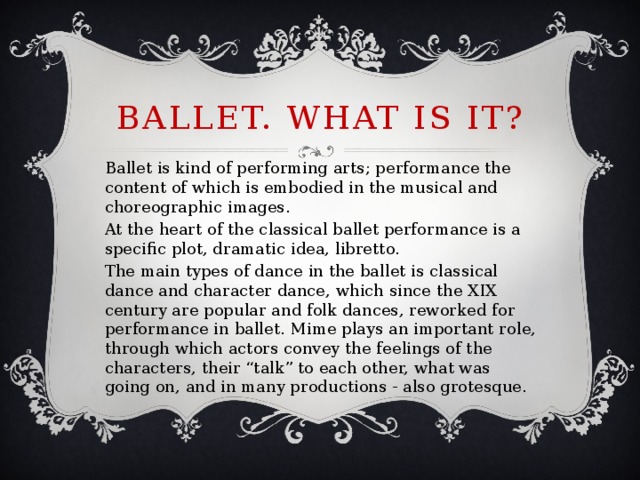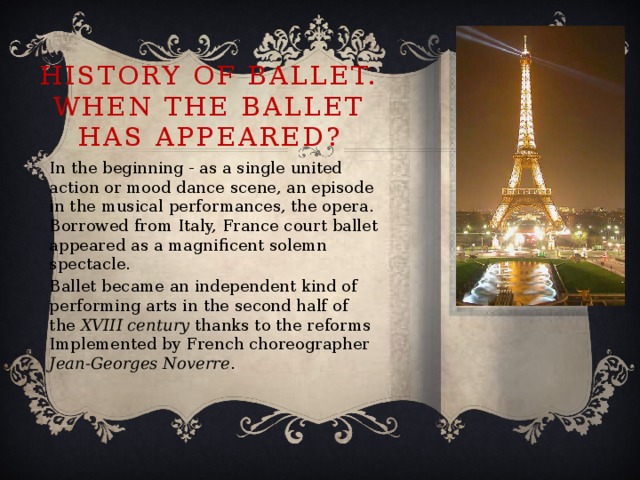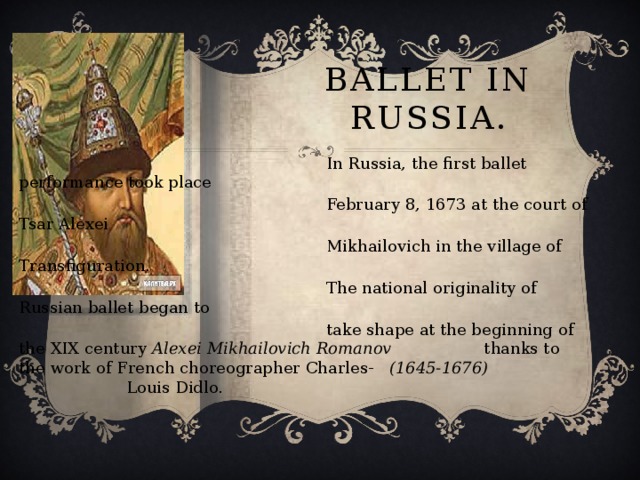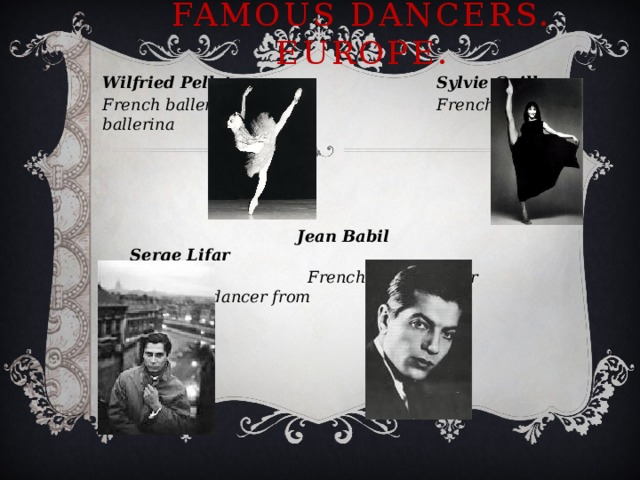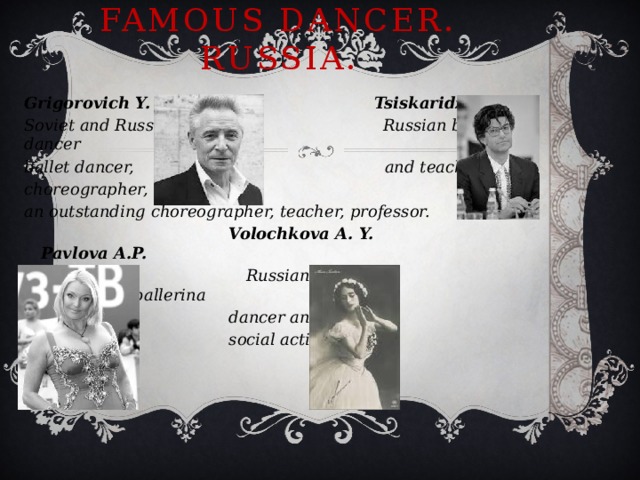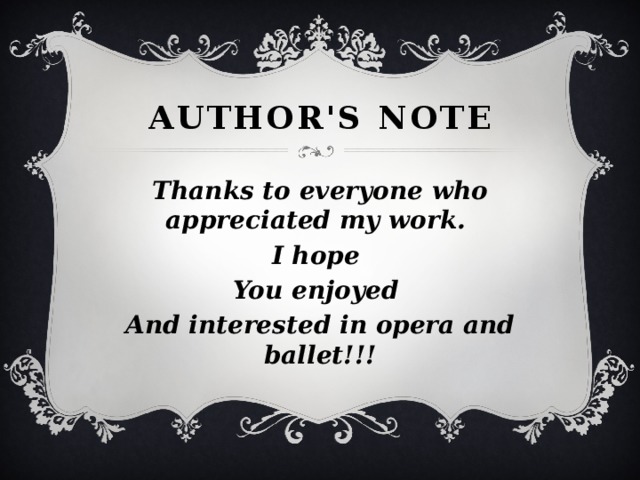Презентация выполнена к одному из уроков по английскому языку на тему: "Опера и балет" (раздел "Музыка в жизни человека", учебник для школ с углубленным изучением английского языка О.А. Афанасьевой, И.В. Михеевой "Английский язык XI"). На уроке ребята знакомятся с историей возникновения оперы и балета в России и за рубежом и её яркими представителями. Тема презентации поможет ребятам разобраться в данных видах искусства и проявить интерес к посещению театра оперы и балета.
Создайте Ваш сайт учителя Видеоуроки Олимпиады Вебинары для учителей
Презентация по английскому языку на тему: "Опера и балет"
Вы уже знаете о суперспособностях современного учителя?
Тратить минимум сил на подготовку и проведение уроков.
Быстро и объективно проверять знания учащихся.
Сделать изучение нового материала максимально понятным.
Избавить себя от подбора заданий и их проверки после уроков.
Наладить дисциплину на своих уроках.
Получить возможность работать творчески.
Просмотр содержимого документа
«Презентация по английскому языку на тему: "Опера и балет" »
Полезное для учителя
Распродажа видеоуроков!
1850 руб.
3080 руб.
1600 руб.
2660 руб.
1660 руб.
2770 руб.
1600 руб.
2660 руб.
ПОЛУЧИТЕ СВИДЕТЕЛЬСТВО МГНОВЕННО
* Свидетельство о публикации выдается БЕСПЛАТНО, СРАЗУ же после добавления Вами Вашей работы на сайт
Удобный поиск материалов для учителей
Проверка свидетельства
